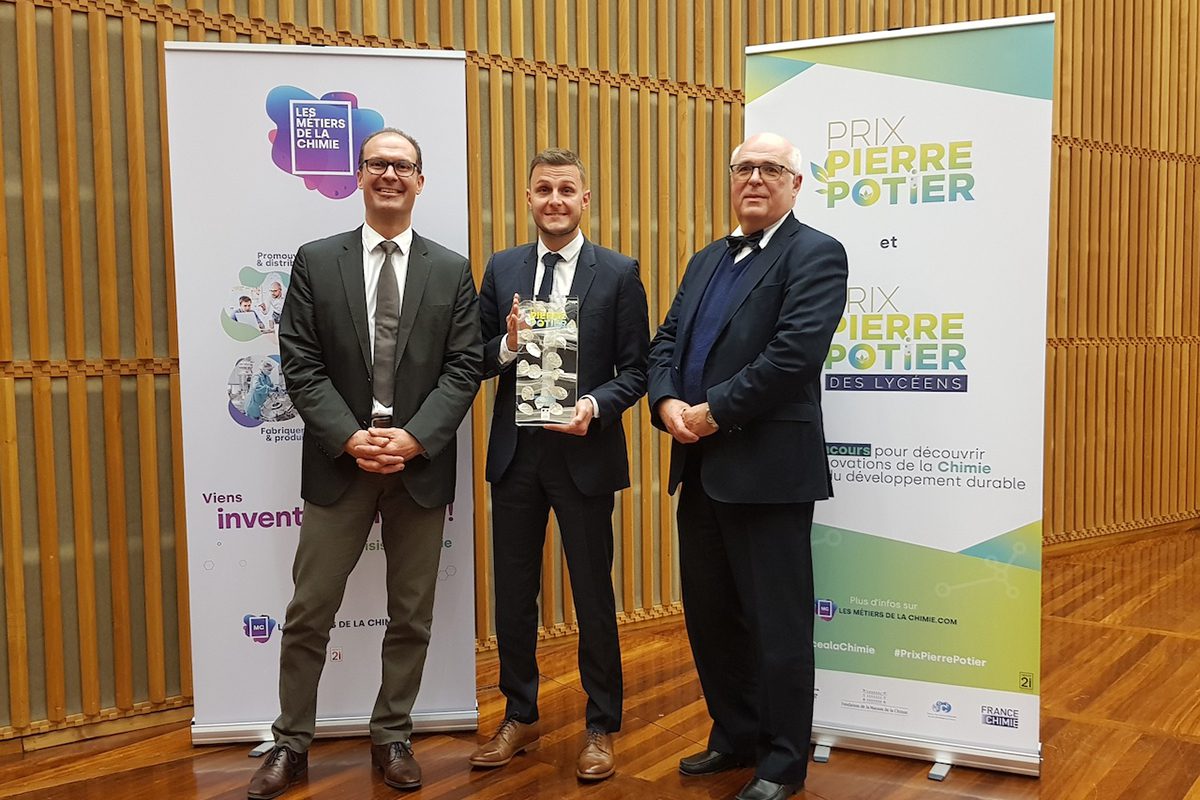
A French-government award that recognises sustainable chemistry initiatives has been picked up by Minakem, a CDMO for active ingredients in the pharmaceutical industry. The firm received the 2020 Pierre Potier prize for the continuous flow chemistry process it developed to produce a special bio-sourced solvent which repurposes plant waste, notably corn stalk or sugar cane residue.
The award ceremony took place on 26 October in Paris-Bercy, France.
“Minakem is immensely honored to have received the Pierre Potier award, one of the highest industry distinctions for international chemistry professionals and academia,” said Jean-Louis Brayer, research director at Minakem. “We thank the panel for its recognition of our continuous flow chemistry process, which attests to our dynamism and ongoing commitment to invest in plant chemistry that enables us to develop the highest quality processes and products. Chemistry and industry are vectors for environmental change. We value the increased public awareness on the uses of organic waste that this award highlights.”
Organic waste diversion is becoming a growing priority at landfills. Notably, many US states have enacted green waste restrictions or bans against landfill disposal. In Europe, Minakem’s development of the bio-sourced solvent 2-Me THF is in conformance with the European Commission’s Bioeconomy Strategy to improve and scale-up the sustainable use of renewable resources and address local and global sustainable development.
Through its continuous flow chemistry process, Minakem says it has grown to become the leading global producer of 2-Me THF, which replaces chlorinated solvents as a reaction solvent or as an extraction solvent in hazardous environments.
Due to its preservative properties, bio-based 2-Me THF also has applications in the production of other key solvents, such as green propylene glycol (Pentiol Green), used in the cosmetics industry. Another product, obtained from Furan using a green process, is DMDHF (DiMethoxyDihydrofuran), used as an intermediate for pharmaceutical products. It is developed using an oxidation technology that involves transferring electrons through an electric current. Conceptually, electrons are the greener oxidative reagent.
“Major cosmetics firms, such as L’Oréal, have reported on their increased use of plant-based ingredients. Using sustainable raw materials has become a priority over the last ten years, due to customer preference for products made from sustainable materials and production processes that protect the environment,” added Olivier Jentzer, R&D director at Minakem.
While continuous flow chemistry has been widely used for decades in the petroleum and industrial chemistry industries, it is a relatively recent concept in fine chemistry and the pharmaceutical and cosmetics industries. The arrival of new technologies with particularly effective heat exchanges, such as microfluidics, which make certain reactions difficult to control in ‘batch’ mode, have triggered the adoption of the continuous flow chemistry process.
About the prize
Created in 2006 by the French Ministry for the Economy, Finance and Industry, and now maintained by the Maison de la Chimie Foundation and France Chimie, the Pierre Potier Prize highlights and rewards chemistry initiatives encouraging sustainable development and the development of eco-responsible approaches in the sector. Awarded by a panel of key figures in research, industry and ministries, this prize has become an important benchmark for business support organizations. Pierre Potier and his colleagues received accolades for having created tools for drug development in the 1970s that have led the field in testing a drug’s capacity to inhibit cell division and thus of its potential anticancer activity; such as Taxotere.







